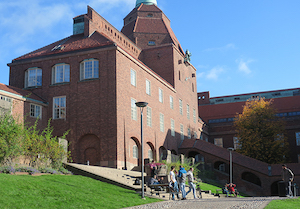Custard Lane School
Description
| Custard Lane School |
| Custard Lane School
Chudleyton [19,24]
Basic Info:
|

The main entrance to Custard Lane School
Custard Lane School is a school located in the suburb of Chudleyton. The founder of the school, Doris Winter-Thistle, was famous for inventing the recipe for the world renowned Malton Custard Pie.
History
Custard Lane School was a private presbyterian school on the Eastern border of Chudleyton. It was generally considered an open-minded liberal arts environment despite students having to attend church every Wednesday. Many of the students attending class here came from affluent neighborhoods in the surrounding area. Their unbeatable football team, The Chudleyton Custard Creamers , had routinely won the northeastern Malton cup since 1985, losing only once, in 1991, to the dogged West Boundwood Vipers from the Bozon Road School in West Boundwood. The Vipers, despite their lack of legitimate school kits or fanbase, managed to come back from a 4-0 deficit and win in a penalty shoot out, thanks to their poised leader, a young Filthy Jenkins.
Barricade policy
According to the Chudleyton Barricade Plan, it is to be kept at Extremely Heavily Barricaded, as maintained by the Apsey Urban Militia.
| This page, Custard Lane School, is a locations stub. Please help us to improve the wiki by contributing to this page. Be sure the following information is added to the page: coordinates, suburb, 9 block map (or 16 block map for large buildings), description, barricading policy, and history. Please refer to the Location Style Guide. |